Popular categories
Looking for a yarn?

45% Alpaca, 30% Polyamide, 25% Wool
from 2.70 £ /50g
Order DROPS Needles & Hooks
Clicking the ORDER button will redirect you to Wool Warehouse Direct Ltd website
The yarn cost is calculated from the pattern’s smallest size and the yarn’s cheapest product type. Looking for an even better price? You might find it on the DROPS Deals!
Green Echo
Knitted jumper with round yoke in DROPS Nord. The piece is worked with lace pattern and textured pattern. Sizes S – XXXL.
DROPS Design: Pattern no-012
Yarn group A
-----------------------------------------------------------
Sizes: S - M - L - XL - XXL - XXXL
Materials:
DROPS NORD from Garnstudio (belongs to yarn group A)
350-350-400-450-500-550 g colour 19, forest green
-------------------------------------------------------
ACCESSORIES FOR THE PIECE:
KNITTING TENSION:
24 stitches in width and 32 rows in height with stocking stitch = 10 x 10 cm.
32 stitches in width and 32 rows in height with textured pattern in A.1= 10 x 10 cm.
NEEDLES:
DROPS DOUBLE POINTED NEEDLES SIZE 3 MM: for sleeves.
DROPS CIRCULAR NEEDLE SIZE 3 MM: length 80 cm for stocking stitch.
DROPS DOUBLE POINTED NEEDLES SIZE 2.5 MM: for rib.
DROPS CIRCULAR NEEDLE SIZE 2.5 MM: length 40 cm and 80 cm for textured pattern/garter stitch.
The needle size is only a guide. If you get too many stitches on 10 cm, change to a larger needle size. If you get too few stitches on 10 cm, change to a smaller needle size.
-------------------------------------------------------
-------------------------------------------------------
Alternative Yarn – See how to change yarns here
Yarn Groups A to F – Use the same pattern and change the yarn here
Yarn usage using an alternative yarn – Use our yarn converter here
-------------------------------------------------------

45% Alpaca, 30% Polyamide, 25% Wool
from 2.70 £ /50g
Order DROPS Needles & Hooks
Clicking the ORDER button will redirect you to Wool Warehouse Direct Ltd website
The yarn cost is calculated from the pattern’s smallest size and the yarn’s cheapest product type. Looking for an even better price? You might find it on the DROPS Deals!
- English (UK/cm)
- Česky - not translated
- Dansk
- Deutsch
- Eesti keel
- English (US/in)
- Español
- Français
- Íslenska
- Italiano
- Magyar
- Nederlands
- Norsk
- Polski
- Português
- Suomi
- Svenska
- English (UK/cm), Bulgaria
- English (UK/cm), Croatia
- English (UK/cm), Greece
- English (UK/cm), Latvia
- English (UK/cm), Lithuania
- English (UK/cm), Romania
- English (UK/cm), Slovenia
- Česky, Slovakia - not translated
Pattern instructions
-------------------------------------------------------
RIDGE/GARTER STITCH (worked in the round):
1 ridge = 2 rounds. Knit 1 round and purl 1 round.
PATTERN:
See diagram A.1. Choose diagram for your size.
DECREASE TIP (for body):
Decrease 1 stitch on each side of each marker thread as follows: Work until there are 3 stitches left before the marker thread, knit 2 together, knit 2 (the marker thread sits in the middle of these 2 stitches), slip 1 stitch as if to knit, knit 1 and pass the slipped stitch over the knitted stitch (= 2 stitches decreased at each marker thread = a total of 4 stitches decreased on the round).
INCREASE TIP (for sleeves):
Work until there are 2 stitches left before the marker, 1 yarn over (= 1 stitch increased), knit 4 (the marker thread sits in the middle of these 4 stitches), 1 yarn over (= 1 stitch increased).
The yarn overs are knitted twisted on the next round to avoid holes.
-------------------------------------------------------
START THE PIECE HERE:
-------------------------------------------------------
JUMPER - SHORT OVERVIEW OF THE PIECE:
The piece is worked bottom up. First the body is worked in the round with circular needle. Then the sleeves are worked in the round with double pointed needles. The sleeves and body are placed on the same circular needle and the yoke is worked in the round with textured pattern.
BODY:
Cast on 254-272-284-315-336-372 stitches with circular needle size 2.5 mm and Nord. Work 3 RIDGES – read description above. Change to circular needle size 3 mm and continue with stocking stitch.
The round starts mid back. Knit 63-68-71-78-84-93 stitches (= half back piece), insert 1 marker thread, knit 127-136-142-158-168-186 stitches (= front piece), insert 1 marker thread and knit the last 64-68-71-79-84-93 stitches (= half back piece).
REMEMBER THE KNITTING TENSION!
When the piece measures 8 cm decrease 1 stitch on each side of each marker thread – read DECREASE TIP!
Decrease like this every 2½ cm a total of 10 times = 214-232-244-275-296-332 stitches. When the piece measures 33-33-34-34-34-34 cm cast off for armholes on the next round as follows:
Knit 49-54-56-63-68-77 stitches, cast off the next 8-8-10-10-12-12 stitches, knit 99-108-112-128-136-154, cast off the next 8-8-10-10-12-12 stitches and knit 50-54-56-64-68-77 = 198-216-224-255-272-308 stitches. Lay the piece to one side and work the sleeves.
SLEEVE:
Cast on 57-60-63-66-66-69 stitches with double pointed needles size 2.5 mm and work rib (= knit 1 / purl 2) over all stitches. When the piece measures 5 cm, change to double pointed needles size 3 mm and continue with stocking stitch. On the first round decrease 12-11-13-13-10-11 stitches evenly on round = 45-49-50-53-56-58 stitches. Insert 1 marker at the beginning of the round. When the sleeve measures 8-10-6-12-12-9 cm, increase 1 stitch on each side of the marker – read INCREASE TIP! Increase like this every 2-1½-1½-1-1-1 cm a total of 16-19-23-24-25-26 times = 77-87-96-101-106-110 stitches. When the piece measures 43-42-41-39-38-36 cm, cast off the first 4-4-5-5-6-6 stitches and the last 4-4-5-5-6-6 stitches for the armhole = 69-79-86-91-94-98 stitches. Lay the piece to one side and work the other sleeve in the same way.
YOKE:
Place the sleeves on the same circular needle size 3 mm as the body, where you cast off stitches for the armholes = 336-374-396-437-460-504 stitches. Work stocking stitch for 0-0-1-0-2-0 cm. Change to circular needle size 2.5 mm.
Work A.1a (= 21-22-22-23-23-24 stitches) over all stitches (= 16-17-18-19-20-21 times in width).
Continue this pattern. When A.1a has been worked 1 time in height there are 304-340-360-399-420-504 stitches on the needle. Now work A.1b over A.1a. When A.1b has been worked 1 time in height there are 112-119-126-133-140-147 stitches on the needle. Cast off with knit over knit and purl over purl. The yoke measures approx. 22-24-25-27-29-31 cm.
ASSEMBLY: Sew underarm seam edge to edge in the outermost loop of the outermost stitch
This pattern has been corrected. Click here to see the correction/s.
Correction: ASSEMBLY: Sew underarm seam edge to edge in the outermost loop of the outermost stitch
Diagram

|
= knit |

|
= purl |

|
= slip 2 stitches onto right needle as if to knit together, knit 1, pass the 2 slipped stitches over the knitted stitch |

|
= between 2 stitches make 1 yarn over; the yarn over is not worked twisted on the next round to leave a hole |

|
= knitting direction |

|
= between 2 stitches make 1 yarn over; the yarn over is worked twisted on the next row to avoid a hole |

|
= purl 2 together |
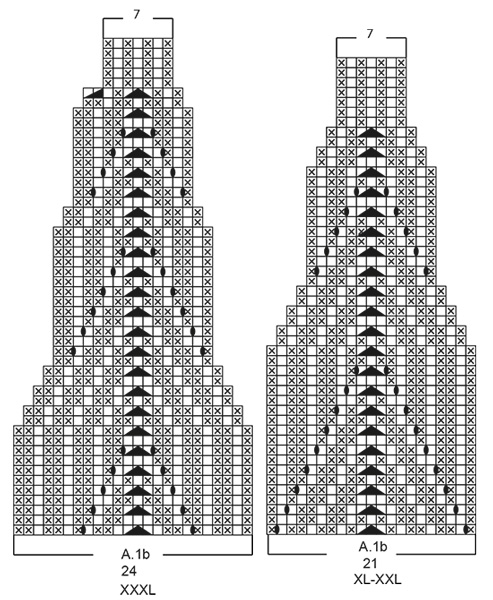




What can you do with our patterns? You can share DROPS patterns online, using the pattern original picture, materials, name and number. But you are NOT ALLOWED to reproduce the complete pattern digitally in any way. Yarn stores are welcome to use the DROPS pattern database to promote the sale of our assortment. You can print out our patterns, make as many copies as you’d like. The only thing we ask is that you don't make any changes / additions to the original printed document. And that the patterns according to the DROPS philosophy are given out to the consumers for free. Editorials that wish to publish our patterns in printed books or magazines can contact us for more information. The sale of garments based on DROPS patterns is permitted as long as they are sold as single items or per order. Further commercial use of the patterns is not permitted. It has to be clearly stated that the garment is made based on a design from DROPS DESIGN. The use of clothing labels of which DROPS DESIGN forms part is conditioned by the inclusion of the following text: “A DROPS DESIGN made by …..”. The use of DROPS photos for marketing purposes/sales is only permitted in connection with the use/sale of DROPS products. The photos may not be cut or edited and the logo should be clearly visible.
We reserve the right to withdraw the permission for use of our patterns at any time, notwithstanding the reason.
Each of our patterns has specific tutorial videos to help you.
These step-by-step tutorials might also help you:
Why is the knitting/crochet tension so important?
Knitting tension is what determines the final measurements of your work, and is usually measured per 10 x 10 cm. It is provided like so: number of stitches in width x number of rows in height - eg: 19 stitches x 26 rows = 10 x 10 cm.
The knitting tension is very individual; some people knit/crochet loosely while others work tightly. You adjust the knitting tension with the needle size, which is why the suggested needle size is only meant as a guide! You need to adjust this (up or down) to ensure that YOUR knitting tension matches the knitting tension provided in the pattern. If you work with a different knitting tension than provided you will have a different yarn consumption, and your work will have different measurements than what the pattern suggests.
The knitting tension also determines which yarns can replace each other. As long as you achieve the same knitting tension you can replace one yarn with another.
See DROPS lesson: How to measure your tension/gauge
See DROPS video: How to make a gauge tension swatch
How do I know how many balls of yarn I need?
The required amount of yarn is provided in grams, eg: 450 g. To calculate how many balls you’ll need you first need to know how many grams are in 1 ball (25g, 50g or 100g). This information is available if you click on the individual yarn quality on our pages. Divide the amount required with the amount of each ball. For example, if each ball is 50g (the most common amount), the calculation will be as follows: 450 / 50 = 9 balls.
Can I use a different yarn than what the pattern suggests?
The important thing when changing from one yarn to another is that the knitting/crochet tension remains the same. This is so that the measurements of the finished piece will be the same as on the sketch provided. It is easier to achieve the same knitting tension using yarns from the same yarn group. It is also possible to work with multiple strands of a thinner yarn to achieve the knitting tension of a thicker one. Please try our yarn converter. We recommend you to always work a test swatch.
Please NOTE: when changing yarn the garment might have a different look and feel to the garment in the photo, due to individual properties and qualities of each yarn.
See DROPS lesson: Can I use a different yarn than the one mentioned in the pattern?
What are the yarn groups?
All our yarns are categorised into yarn groups (from A to F) according to thickness and knitting tension – group A contains the thinnest yarns and group F the thickest. This makes it easier for you to find alternative yarns to our patterns, should you wish to switch yarn. All yarns within the same group have a similar knitting tension and can easily replace each other. However, different yarn qualities have different structures and properties which will give the finished work a unique look and feel.
How do I use the yarn calculator?
At the top of all our patterns you’ll find a link to our yarn calculator, which is a helpful tool should you wish to use a different yarn than suggested. By filling in the yarn quality you wish to replace, the amount (in your size) and number of strands, the calculator will present good alternative yarns with the same knitting tension. Additionally it will tell you how much you’ll require in the new qualities and whether you’ll need to work with multiple strands. Most skeins are 50g (some are 25g or 100g).
If the pattern is worked with multiple colours, every colour will have to be calculated separately. Similarly, if the pattern is worked with several strands of different yarns (for example 1 strand Alpaca and 1 strand Kid-Silk) you will have to find alternatives for each, individually.
Why do you show discontinued yarns in the patterns?
Since different yarns have different qualities and textures we have chosen to keep the original yarn in our patterns. However, you can easily find options among our available qualities by using our yarn calculator, or simply pick a yarn from the same yarn group.
It is possible that some retailers still have discontinued yarns in stock, or that someone has a few skeins at home that they would like to find patterns for.
The yarn calculator will provide both alternative yarn as well as required amount in the new quality.
What size should I knit?
If you think it's hard to decide what size to make, it can be a good idea to measure a garment you own already and like the size of. Then you can pick the size by comparing those measures with the ones available in the pattern's size chart.
You'll find the size chart at the bottom of the pattern.
See DROPS lesson: How to read size chart
Why do I get the wrong knitting tension with the suggested needle size?
The needle size provided in the pattern serves only as a guide, the important thing is to follow the knitting tension. And since knitting tension is very individual, you will have to adjust the needle size to ensure that YOUR tension is the same as in the pattern – maybe you’ll have to adjust 1, or even 2 needle sizes, up or down to achieve the correct tension. For this, we recommend that you work test swatches.
Should you work with a different knitting tension than the one provided, the measurements of the finished garment might deviate from the measurement sketch.
See DROPS lesson: How to measure your tension/gauge
See DROPS video: How to make a tension/gauge swatch
Why is the pattern worked top-down?
Working a garment top-down provides more flexibility and room for personal adjustment. For example it is easier to try the garment on while working, as well as making adjustments to length of yoke and shoulder caps.
The instructions are carefully explaining every step, in the correct order. Diagrams are adjusted to the knitting direction and are worked as usual.
How do I work according to a knitting diagram?
The diagram depicts all rows/rounds, and every stitch seen from the right side. It is read from bottom to top, from right to left. 1 square = 1 stitch.
When working back and forth, every other row is worked from the right side and every other row is worked from the wrong side. When working from the wrong side, the diagram will have to be worked reversed: from left to right, knit stitches are purled, purl stitches are knit etc.
When working in the round every round is worked from the right side and the diagram are worked from right to left on all rounds.
See DROPS lesson: How to read knitting diagrams
How do I work according to a crochet diagram?
The diagram depicts all rows/rounds, and every stitch seen from the right side. It is worked from bottom to top, from right to left.
When working back and forth every other row is worked from the right side: from right to left and every other row is worked from the wrong side: from left to right.
When working in the round, every row in the diagram are worked from the right side, from right to left.
When working a circular diagram you start in the middle and work your way outwards, counter clockwise, row by row.
The rows usually start with a given number of chain stitches (equivalent to the height of the following stitch), this will either be depicted in the diagram or explained in the pattern.
See DROPS lesson: How to read crochet diagrams
How do I work several diagrams simultaneously on the same row/round?
Instructions for working several diagrams after each other on the same row/round, will often be written like so: “work A.1, A.2, A.3 a total of 0-0-2-3-4 times". This means you work A.1 once, then A.2 is worked once, and A.3 is repeated (in width) the number of times provided for your size – in this case like so: S = 0 times, M = 0 times, L=2 times, XL= 3 times and XXL = 4 times.
The diagrams are worked as usual: begin with the first row in A.1, then work the first row in A.2 etc.
See DROPS lesson: How to read knitting diagrams
See DROPS lesson: How to read crochet diagrams
Why are the sleeves shorter in larger sizes?
The total width of the garment (from wrist-to-wrist) will be larger in the larger sizes, despite the actual sleeves being shorter. The larger sizes have longer sleeve caps and wider shoulders, so there will be a good fit in all sizes.
Where on the garment is the length measured?
The measurement sketch/schematic drawing provides information regarding the full length of the garment. If it’s a jumper or a jacket the length is measured from the highest point on the shoulder closest to the neckline, and straight down to the bottom of the garment. It is NOT measured from the tip of shoulder. Similarly, the length of yoke is measured from the highest point on the shoulder and down to where yoke is split into body and sleeves.
On a jacket measures are never taken along bands, unless specifically stated. Always measure inside band stitches when measuring the length.
See DROPS lesson: How to read a schematic drawing
What is a repeat?
Diagrams are often repeated on the round or in height. 1 repeat is the diagram the way it appears in the pattern. If it says to work 5 repeats of A.1 in the round, then you work A.1 a total of 5 times after/next to each other in the round. If it says to work 2 repeats of A.1 vertically/in height you work the entire diagram once, then begin again at the start and work the entire diagram one more time.
Why does the piece start with more chain stitches than it’s worked with?
Chain stitches are slightly narrower than other stitches and to avoid working the cast-on edge too tight, we simply chain more stitches to begin with. The stitch count will be adjusted on the following row to fit the pattern and measurement sketch.
Why increase before the rib edge when the piece is worked top-down?
The rib edge is more elastic and will contract slightly compared to, for example, stocking stitch. By increasing before the rib edge, you avoid a visible difference in width between the rib edge and the rest of the body.
Why increase in the cast-off edge?
It’s very easy to cast off too tightly, and by making yarn overs while casting off (and simultaneously casting these off) you avoid a too tight cast off edge.
See DROPS video: How to bind off with yarn overs (yo)
How do I increase/decrease on every 3rd and 4th row/round alternately?
To achieve an even increase (or decrease) you can increase on, for example: every 3rd and 4th row alternately, like so: work 2 rows and increase on the 3rd row, work 3 rows and increase on the 4th. Repeat this until the increase is complete.
See DROPS lesson: Increase or decrease 1 st on every 3rd and 4th row alternately
How can I work a jacket in the round instead of back and forth?
Should you prefer to work in the round instead of back and forth, you may of course adjust the pattern. You’ll need to add steeks mid-front (usually 5 stitches), and follow the instructions. When you would normally turn and work from the wrong side, simply work across the steek and continue in the round. At the end you’ll cut the piece open, pick up stitches to work bands, and cover the cut edges.
See DROPS video: How to knit steeks and cut open
Can I work a jumper back and forth instead of in the round?
Should you prefer to work back and forth instead of in the round, you may of course adjust the pattern so you work the pieces separately and then assemble them at the end. Divide the stitches for the body in 2, add 1 edge stitch in each side (for sewing) and work the front and back pieces separately.
See DROPS lesson: Can I adapt a pattern for circular needles into straight needles?
Why is the pattern slightly different than what I see in the photo?
Pattern repeats can vary slightly in the different sizes, in order to get the correct proportions. If you’re not working the exact same size as the garment in the photo, yours might deviate slightly. This has been carefully developed and adjusted so that the complete impression of the garment is the same in all sizes.
Make sure to follow instructions and diagrams for your size!
How do I make a women’s size garment into a men’s size one?
If you have found a pattern you like which is available in women’s size it’s not very difficult to convert it to men’s size. The biggest difference will be the length of sleeves and body. Start working on the women size that you think would fit across the chest. The additional length will be worked right before you cast off for the armhole/sleeve cap. If the pattern is worked top-down you can add the length right after the armhole or before the first decrease on sleeve.
Regarding additional yarn amount, this will depend on how much length you add, but it is better with a skein too many than too few.
How do I prevent a hairy garment from shedding?
All yarns will have excess fibres (from production) that might come off as lint or shedding. Brushed yarns (ie hairier yarns) have more of these loose, excess fibres, causing more shedding.
Shedding also depends on what is worn under or over the garment, and whether this pulls at the yarn fibres. It’s therefore not possible to guarantee that there will be no shedding
Below are some tips on how to get the best result when working with hairier yarns:
1. When the garment is finished (before you wash it) shake it vigorously so the looser hairs come off. NOTE: do NOT use a lint roller, brush or any method that pulls at the yarn.
2. Place the garment in a plastic bag and put it in your freezer - the temperature will cause the fibres to become less attached to each other, and excess fibres will come off easier.
3. Leave in the freezer for a few hours before taking it out and shaking it again.
4. Wash the garment according to the instructions on the yarn label.
Why does my garment pill?
Pilling is a natural process that happens to even the most exclusive of fibers. It's a natural sign of wear and tear that is hard to avoid, and that is most visible in high friction areas of your garment like a sweater's arms and cuffs.
You can make your garment look as new by removing the pilling, using a fabric comb or a pill/lint remover.
In the meantime, you can read the questions and answers that others have left to this pattern or join the DROPS Workshop on Facebook to get help from fellow knitters/crocheters!
You might also like...
Green Echo |
||||||||||||||||||||||
 |
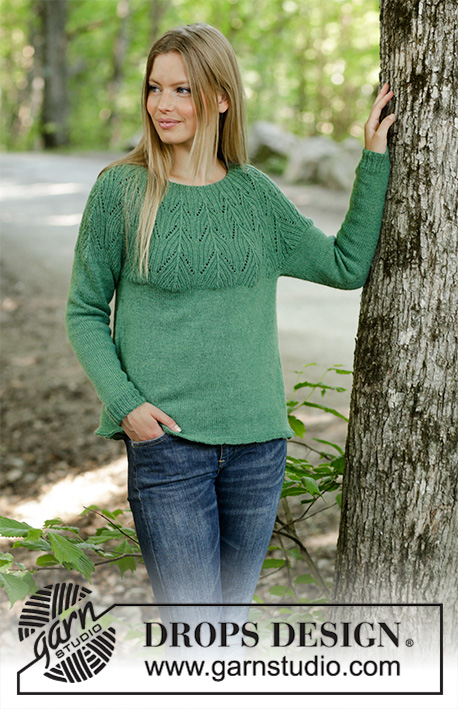 |
|||||||||||||||||||||
Knitted jumper with round yoke in DROPS Nord. The piece is worked with lace pattern and textured pattern. Sizes S – XXXL.
DROPS 196-26 |
||||||||||||||||||||||
|
EXPLANATIONS FOR THE PATTERN: ------------------------------------------------------- RIDGE/GARTER STITCH (worked in the round): 1 ridge = 2 rounds. Knit 1 round and purl 1 round. PATTERN: See diagram A.1. Choose diagram for your size. DECREASE TIP (for body): Decrease 1 stitch on each side of each marker thread as follows: Work until there are 3 stitches left before the marker thread, knit 2 together, knit 2 (the marker thread sits in the middle of these 2 stitches), slip 1 stitch as if to knit, knit 1 and pass the slipped stitch over the knitted stitch (= 2 stitches decreased at each marker thread = a total of 4 stitches decreased on the round). INCREASE TIP (for sleeves): Work until there are 2 stitches left before the marker, 1 yarn over (= 1 stitch increased), knit 4 (the marker thread sits in the middle of these 4 stitches), 1 yarn over (= 1 stitch increased). The yarn overs are knitted twisted on the next round to avoid holes. ------------------------------------------------------- START THE PIECE HERE: ------------------------------------------------------- JUMPER - SHORT OVERVIEW OF THE PIECE: The piece is worked bottom up. First the body is worked in the round with circular needle. Then the sleeves are worked in the round with double pointed needles. The sleeves and body are placed on the same circular needle and the yoke is worked in the round with textured pattern. BODY: Cast on 254-272-284-315-336-372 stitches with circular needle size 2.5 mm and Nord. Work 3 RIDGES – read description above. Change to circular needle size 3 mm and continue with stocking stitch. The round starts mid back. Knit 63-68-71-78-84-93 stitches (= half back piece), insert 1 marker thread, knit 127-136-142-158-168-186 stitches (= front piece), insert 1 marker thread and knit the last 64-68-71-79-84-93 stitches (= half back piece). REMEMBER THE KNITTING TENSION! When the piece measures 8 cm decrease 1 stitch on each side of each marker thread – read DECREASE TIP! Decrease like this every 2½ cm a total of 10 times = 214-232-244-275-296-332 stitches. When the piece measures 33-33-34-34-34-34 cm cast off for armholes on the next round as follows: Knit 49-54-56-63-68-77 stitches, cast off the next 8-8-10-10-12-12 stitches, knit 99-108-112-128-136-154, cast off the next 8-8-10-10-12-12 stitches and knit 50-54-56-64-68-77 = 198-216-224-255-272-308 stitches. Lay the piece to one side and work the sleeves. SLEEVE: Cast on 57-60-63-66-66-69 stitches with double pointed needles size 2.5 mm and work rib (= knit 1 / purl 2) over all stitches. When the piece measures 5 cm, change to double pointed needles size 3 mm and continue with stocking stitch. On the first round decrease 12-11-13-13-10-11 stitches evenly on round = 45-49-50-53-56-58 stitches. Insert 1 marker at the beginning of the round. When the sleeve measures 8-10-6-12-12-9 cm, increase 1 stitch on each side of the marker – read INCREASE TIP! Increase like this every 2-1½-1½-1-1-1 cm a total of 16-19-23-24-25-26 times = 77-87-96-101-106-110 stitches. When the piece measures 43-42-41-39-38-36 cm, cast off the first 4-4-5-5-6-6 stitches and the last 4-4-5-5-6-6 stitches for the armhole = 69-79-86-91-94-98 stitches. Lay the piece to one side and work the other sleeve in the same way. YOKE: Place the sleeves on the same circular needle size 3 mm as the body, where you cast off stitches for the armholes = 336-374-396-437-460-504 stitches. Work stocking stitch for 0-0-1-0-2-0 cm. Change to circular needle size 2.5 mm. Work A.1a (= 21-22-22-23-23-24 stitches) over all stitches (= 16-17-18-19-20-21 times in width). Continue this pattern. When A.1a has been worked 1 time in height there are 304-340-360-399-420-504 stitches on the needle. Now work A.1b over A.1a. When A.1b has been worked 1 time in height there are 112-119-126-133-140-147 stitches on the needle. Cast off with knit over knit and purl over purl. The yoke measures approx. 22-24-25-27-29-31 cm. ASSEMBLY: Sew underarm seam edge to edge in the outermost loop of the outermost stitch |
||||||||||||||||||||||
Diagram explanations |
||||||||||||||||||||||
|
||||||||||||||||||||||

|
||||||||||||||||||||||

|
||||||||||||||||||||||

|
||||||||||||||||||||||

|
||||||||||||||||||||||

|
||||||||||||||||||||||
|
Have you made this or any other of our designs? Tag your pictures in social media with #dropsdesign so we can see them! Do you need help with this pattern?You'll find tutorial videos, a Comments/Questions area and more by visiting the pattern on garnstudio.com. © 1982-2024 DROPS Design A/S. We reserve all rights. This document, including all its sub-sections, has copyrights. Read more about what you can do with our patterns at the bottom of each pattern on our site. |
||||||||||||||||||||||
With over 40 years in knitting and crochet design, DROPS Design offers one of the most extensive collections of free patterns on the internet - translated to 17 languages. As of today we count 304 catalogues and 11422 patterns - 11422 of which are translated into English (UK/cm).
We work hard to bring you the best knitting and crochet have to offer, inspiration and advice as well as great quality yarns at incredible prices! Would you like to use our patterns for other than personal use? You can read what you are allowed to do in the Copyright text at the bottom of all our patterns. Happy crafting!









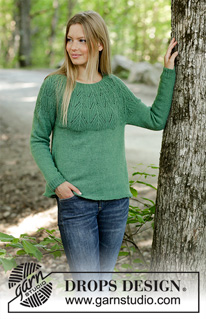


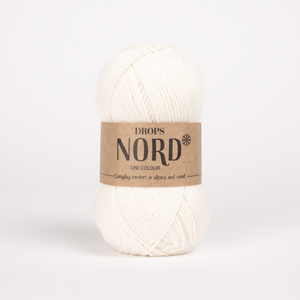
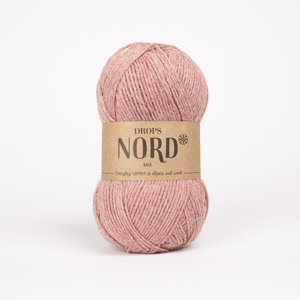




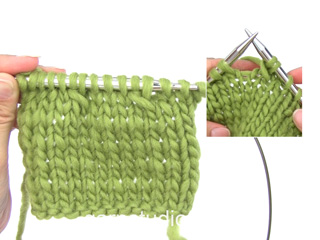

































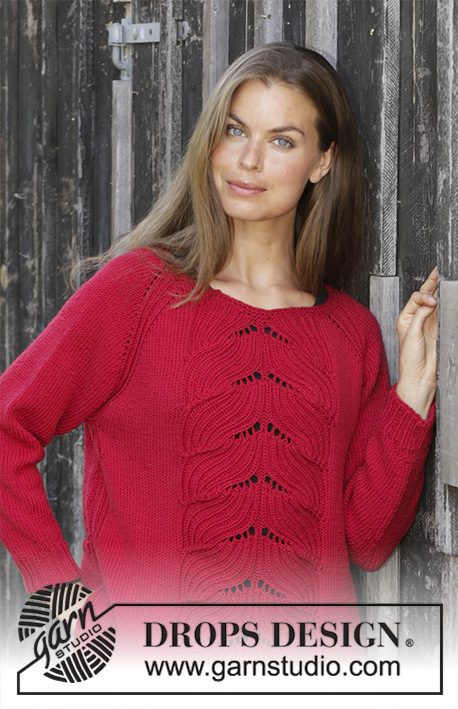
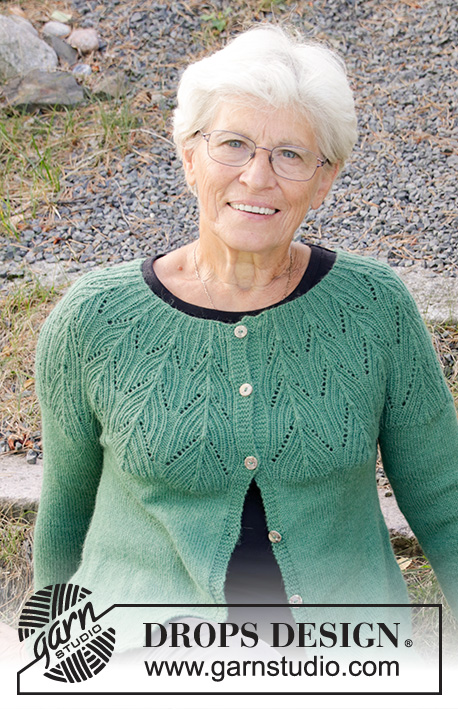







Comments / Questions (21)
Har ,strikket ryg og forstykke. Har nu 437 m pinden. Strikker størrelse XL. Mit spørgsmål er hvor starter jeg i diagrammet til bærestykket i størrelse XL. Har prøvet mange gange og kan ikke få mønsteret til at passe. Det er første gang jeg strikker efter en DROPS opskrift.
18.04.2024 - 16:41DROPS Design answered:
Hej Birte, hvis du deler bærestykket ind, så du har 23 masker mellem hvert mærke, da vil du få 19 rapporter med 23 masker = 437 masker :)
19.04.2024 - 15:01Hej! Jag ställde en fråga igår angående mönster A1a storlek M. Fick svar att jag bara ska följa mönstret på varv 6, men det fungerar inte. Om jag avslutar varv 5 med 2 aviga maskor och den fösta maskan på varv 6 är en avig maska så sker ingen förändring i mönstret. Det blir aviga på aviga och räta på räta maskor. I mitten av rapporten ska man sticka en avig en rät, en avig. Det är exakt samma som på varv 5. Tacksam för bättre förklaring än att bara följa mönstret.
03.10.2023 - 20:15DROPS Design answered:
Hej Anne-Charlotte, jo men det ska bli aviga på aviga och räta på räta, de 5 mittersta räta blir till 3 räta (med am på varje sida). Du kan även titta på bilden med mönstret. Är du osäker så sticka upp rapporten över de 28 maskorna, så du ser hur det ser ut :)
17.10.2023 - 11:45Hej! Jag ska sticka enligt mönster A1a men när jag stickar varv 6 får jag inte ihop mönstret. Enligt mönstrets varv 5 minskar man 2 maskor i mitten av rapporten , men på varv 6 är det en maska mindre i början och slutet av rapporten. Jag kan inte sticka avig, rät, avig över den maska som på varv 5 blivit en av tre maskor (i mitten av rapporten). Kan ni snälla förklara hur jag ska sticka? Vänliga hälsningar Anne-Charlotte
02.10.2023 - 14:42DROPS Design answered:
Hej Anne-Charlotte. Börja bara med att sticka första maskan enligt diagram på varv 6 och följ diagrammet så blir mönstret riktigt. Mvh DROPS Design
03.10.2023 - 14:09Hej ! Drops 196-26: Jag följer diagram A 1a i storlek xxxl, jag vet att man följer diagrammet nerifrån o från höger till vänster. Jag har både stickat och virkat många av Drops mönster tidigare och aldrig haft problem med dem men denna gång lyckas jag inte få det att stämma😥 Isabella
26.10.2022 - 14:54DROPS Design answered:
Hej Isabelle, På pind 8 i A.1a har du 30 masker, sæt et mærke på hver side af de 30 masker i diagrammet (gør det hele vejen rundt), så strikker du varv 8: 1am, 1r, 1am, 1r, 2am, 1r osv over de 30 masker og starter forfra ved næste mærke :)
27.10.2022 - 10:05Detta gäller Drops 196-2 Jag håller på med oket och får inte diagrammet att stämma , stickar storlek xxxl. Är på varav 8 och de blir inte rätt, första maskan avig sedan två räta om jag stickar omslaget rätstickat blir det ju tre rätmaskor om det ska bli förskjutning mot mitten. Förstår inte heller om det ska bli fler maskor under tiden, en maska mindre eftersom man ska ta in en vid mitten men det borde ju bli två fler i samband med omslagen ( två stycken) mvh Isabella
25.10.2022 - 16:58DROPS Design answered:
Hej Isabella, du ved at du starter nederst i diagrammet og tager ind ifølge diagrammet? Hvilket diagram er det du ikke får til at stemme?
26.10.2022 - 09:18I knitted the blouse in size S and the upper part , the yoke, came out shorter than I expected, shorter than is in the pattern . What I did wrong?
27.11.2020 - 19:42DROPS Design answered:
Dear Iona, is your knitting tension matching in height? You should have 32 rows in stocking stitch and in pattern A.1 = 10 cm with the larger needles - read more about tension here. Hope this can help. Happy knitting!
30.11.2020 - 08:10Hej Jeg strikker opskriften i str. XXXL, men kan ikke få mønster A.1a til at passe. Jeg er kommet til pind 6, altså efter 1 udtagning. Pind 5 passer, men ikke pind 6. Hjælp, så jeg kan komme videre tak
23.11.2020 - 05:53DROPS Design answered:
Hei Pernille. Hva er det som ikke stemmer? Husk å strikke diagrammet som tilhører din størelse. Om du ser på diagrammet så forskyver rett og vrangmaskene seg et hakk inn mot senter av diagrammet. mvh DROPS design
24.11.2020 - 12:26Bonjour,je fais la taille XL. Pour les manches, je commence par 53 mailles après les côtes et j’ajoute 2 mailles à chaque rang. A la fin, je dois avoir 106 mailles. Comment peut-on avoir un nombre pair en partan par un nombre impair, y ajoutant 2 mailles chaque fois?
10.01.2020 - 16:38Hej Drops, jeg har strikket mønstre, men dette giver mig problemer. Jeg strikker en small, men A1 ser ud til at være op til 25 masker fra højre mod.venstre. er det det?. Der står nemlig 21 over alle masker i opskriften. Eller skal man kun strikke de 21 og så slutte med en ret og begynde med en ret på pind 3-5 f.eks.? Gør jeg det, passer mønstret dog ikke. jeg har brug for at vide, hvor pinden begynder og sluttter? .Tak på forhånd
02.10.2019 - 21:07DROPS Design answered:
Hej Hanne-Merete, Du skal vælge det diagram der står A.1a = 21 masker S (for small). Og det skal du gentage, sæt gerne et lille mærke imellem hver rapport, så du er sikker på at få alle udtagninger og indtagninger med ifølge diagrammet. God fornøjelse!
03.10.2019 - 11:44Cześć ! Wydziergałam ten sweterek.Na początku wydawał się trudny.Ale udało się.Mam go dzięki Wam.
26.02.2019 - 18:19